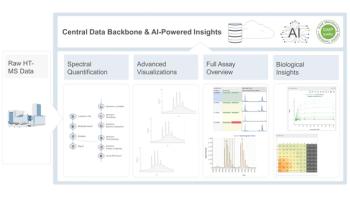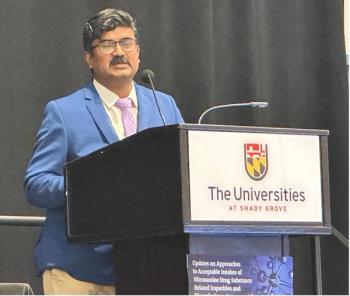
- October 2023
- Volume 19
- Issue 10
- Pages: 7
Characterizing Nonpolar Sterol Lipids Using Novel N–H Aziridination Method
A recent study published in the Journal of American Society of Mass Spectrometry introduced a new method for characterizing nonpolar lipids (1).
Researchers from Texas A&M University, in Lubbock, Texas, USA, discussed how this novel method, called N–H aziridination, advances lipidomics and analytical chemistry.
Nonpolar lipids play a crucial role in various biological functions and can exist in multiple isomeric forms (1). Accurately characterizing them has long been a challenge (1). The N–H aziridination method that the researchers proposed in the article was designed to target carbon–carbon double bonds (C=C bonds) in nonpolar sterol lipids (1).
What sets this approach apart is its ability to generate specific fragment ions for determining the position of C=C bonds and fingerprint fragments for characterizing the lipid backbone (1). As a result, the N–H aziridination method could be beneficial in potential applications ranging from disease diagnosis to drug development.
In the study, the researchers demonstrated that aziridination of sterols provides distinct fragmentation pathways for chain and ring C=C bonds, enabling the identification of sterol isomers like desmosterol and 7-dehydrocholesterol (1). Furthermore, aziridination aids in identifying the sterol backbone by offering unique tandem mass spectra, providing researchers with a comprehensive view of these complex molecules (1).
Another important feature of the N–H aziridination method is its quantitative capacity. The researchers tested this capability in the study and found that the method had a limit of detection (LOD) of 10 nM in a solvent mixture of water and methanol (1). By using mouse prostate cancerous tissues, the researchers proved that the technique can be applied to complex biological samples (1). The team concluded that there were differences between the nonpolar lipid profiles of cancerous and healthy samples, which means that the method could be used for diagnostic applications of biological samples (1).
Reference
(1) Hirtzel, E.; Edwards, M.; Freitas, D.; et al. Aziridination-Assisted Mass Spectrometry of Nonpolar Sterol Lipids with Isomeric Resolution. J. Am. Soc. Mass Spectrom. 2023, 34 (9), 1998–2005. DOI:
Articles in this issue
over 2 years ago
Astrea Bioseparations Expands North American Facilitiesover 2 years ago
The Fundamentals of Chromatographyover 2 years ago
Why is Open-Access Hyphenation Important for Chromatographers?over 2 years ago
Measuring the Effects of Dirt in the Gas Chromatography Systemover 2 years ago
Vol 19 No 10 The Column October 2023 North American PDFover 2 years ago
Vol 19 No 10 The Column October 2023 Europe & Asia PDFNewsletter
Join the global community of analytical scientists who trust LCGC for insights on the latest techniques, trends, and expert solutions in chromatography.




